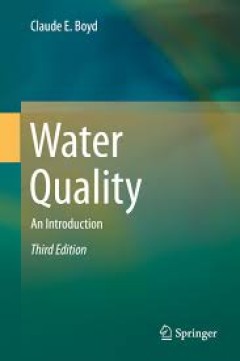Filter by

Pesticide drift and the pursuit of environmental justice
"In this book, Jill Lindsey Harrison considers political conflicts over pesticide drift in California, using them to illuminate the broader problem and its potential solutions. The fact that pesticide pollution and illnesses associated with it disproportionately affect the poor and the powerless raises questions of environmental justice (and political injustice). Despite California's impressive…
- Edition
- -
- ISBN/ISSN
- 9780262298766
- Collation
- 1 online resource (xvii, 277 pages) :illustrations, maps.
- Series Title
- -
- Call Number
- -

Certifying China :the rise and limits of transnational sustainability governa…
"Using original data and mixed methods, the book offers a comprehensive study on the spread of transnational sustainability certification in China's agri-food supply chains"--OCLC-licensed vendor bibliographic record.
- Edition
- -
- ISBN/ISSN
- 9780262369619
- Collation
- 1 online resource.
- Series Title
- -
- Call Number
- -

The convergent evolution of agriculture in humans and insects
"An edited collection about the evolution of agriculture in humans and insects"--OCLC-licensed vendor bibliographic record.
- Edition
- -
- ISBN/ISSN
- 0262367572
- Collation
- 1 online resource.
- Series Title
- -
- Call Number
- -

Eat, cook, grow :mixing human-computer interactions with human-food interacti…
"Our contemporary concerns about food range from food security to agricultural sustainability to getting dinner on the table for family and friends. This book investigates food issues as they intersect with participatory Internet culture--blogs, wikis, online photo- and video-sharing platforms, and social networks--in efforts to bring about a healthy, socially inclusive, and sustainable food fu…
- Edition
- -
- ISBN/ISSN
- 9780262026857
- Collation
- 1 online resource (x, 303 pages) :illustrations
- Series Title
- -
- Call Number
- -

Food justice
The story of how the emerging food justice movement is seeking to transform the American food system from seed to table. In today's food system, farm workers face difficult and hazardous conditions, low-income neighborhoods lack supermarkets but abound in fast-food restaurants and liquor stores, food products emphasize convenience rather than wholesomeness, and the international reach of Americ…
- Edition
- -
- ISBN/ISSN
- 9780262289443
- Collation
- 1 online resource (vii, 290 pages, 12 unnumbered pages of plates) :illustrations.
- Series Title
- -
- Call Number
- -

Cultivating science, harvesting power :science and industrial agriculture in …
Christopher R. Henke reveals how agricultural scientists and growers in California have cooperated - and struggled - in shaping the state's multi-billion-dollar farm industry.OCLC-licensed vendor bibliographic record.
- Edition
- -
- ISBN/ISSN
- 9780262275286
- Collation
- 1 online resource (xi, 226 pages) :illustrations, map.
- Series Title
- -
- Call Number
- -

Shifting ground :the changing agricultural soils of China and Indonesia
In this book Peter Lindert evaluates environmental concerns about soil degradation in two very large countries--China and Indonesia--where anecdotal evidence has suggested serious problems. Lindert does what no scholar before him has done: using new archival data sets, he measures changes in soil productivity over long enough periods of time to reveal the influence of human activity.China and I…
- Edition
- -
- ISBN/ISSN
- 9780262278393
- Collation
- 1 online resource (xii, 351 pages) :illustrations, maps
- Series Title
- -
- Call Number
- -

Water Quality An Introduction
The revised second edition updates and expands the discussion, and incorporates additional figures and illustrative problems. Improvements include a new chapter on basic chemistry, a more comprehensive chapter on hydrology, and an updated chapter on regulations and standards. This book presents the basic aspects of water quality, emphasizing physical, chemical, and biological factors. The s…
- Edition
- -
- ISBN/ISSN
- 978-3-319-17446-4
- Collation
- -
- Series Title
- -
- Call Number
- -

Vision Infinity for Food Security Some Whys, Why Nots and Hows!
A new perspective on the global food security situation and highlights the need for seeking a common vision and implementing global planning to define the manner in which the human species will manage its food security. The basic question of ‘is there enough food’ is examined in general and then in some detail. The history of food production is reviewed in the hope that lessons can be learn…
- Edition
- -
- ISBN/ISSN
- 978-3-319-23249-2
- Collation
- -
- Series Title
- -
- Call Number
- -

Pillars of the Earth: Building a Fantasy
- Edition
- -
- ISBN/ISSN
- 9780262373449
- Collation
- -
- Series Title
- -
- Call Number
- -
- Edition
- -
- ISBN/ISSN
- 9780262373449
- Collation
- -
- Series Title
- -
- Call Number
- -
 Computer Science, Information & General Works
Computer Science, Information & General Works  Philosophy & Psychology
Philosophy & Psychology  Religion
Religion  Social Sciences
Social Sciences  Language
Language  Pure Science
Pure Science  Applied Sciences
Applied Sciences  Art & Recreation
Art & Recreation  Literature
Literature  History & Geography
History & Geography